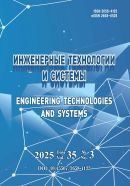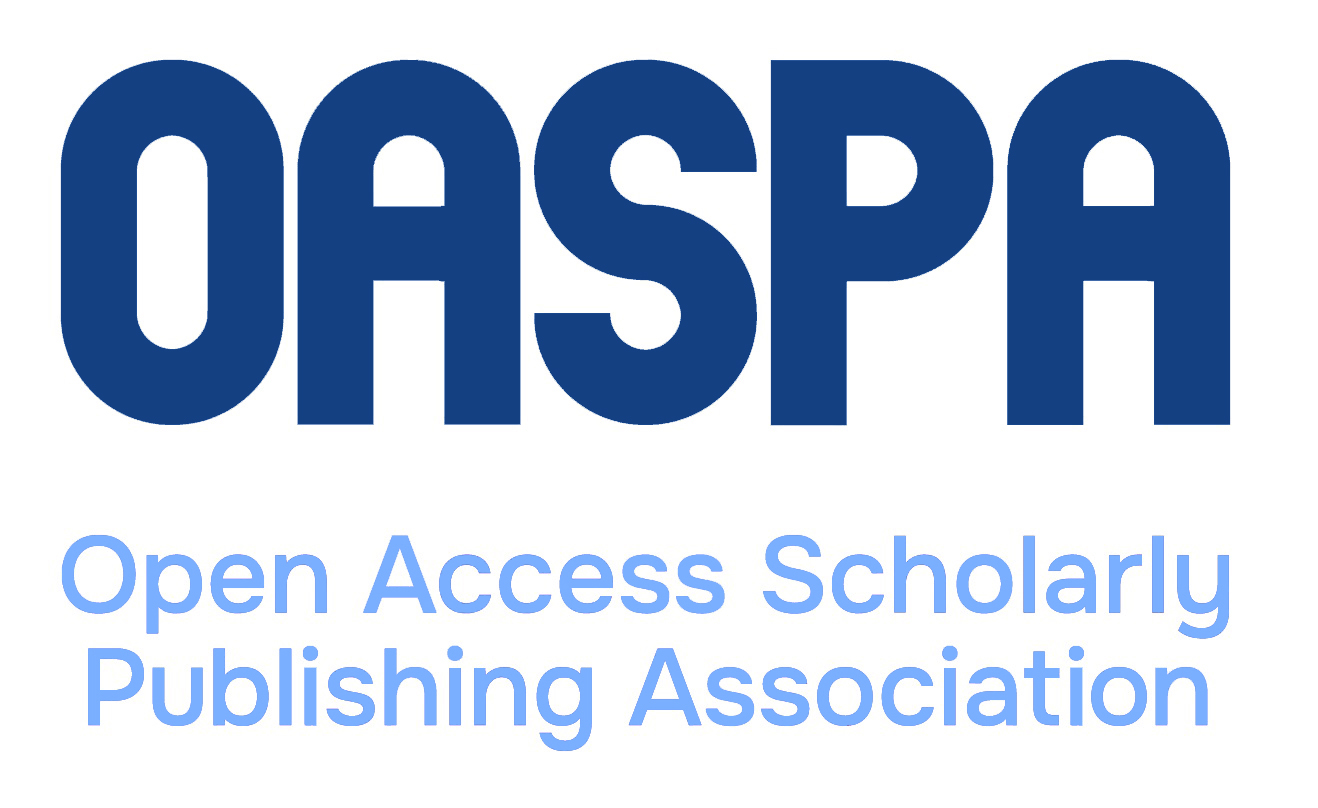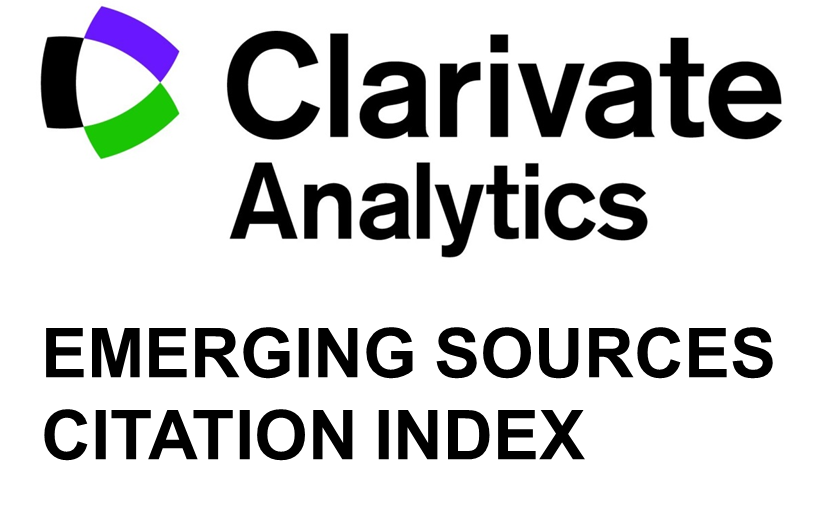DOI: 10.15507/2658-4123.035.202501.030-048
Substantiation of the Parameters of Water Activation in an Electroactivator for Watering Plants
Vladimir F. Storchevoy
Dr.Sci. (Eng.), Professor of the Department of Theoretical Electrical Engineering, Moscow Aviation Institute (4 Volokolamsk Shosse, Moscow 125993, Russian Federation), ORCID: https://orcid.org/0000-0002-6929-3919, Researcher ID: ABB-9545-2021, This email address is being protected from spambots. You need JavaScript enabled to view it.
Mikhail I. Belov
Dr.Sci. (Eng.), Professor of the Department of Automation and Robotization of Technological Processes named after Academician I. F. Borodin, Russian State Agrarian University – Moscow Timiryazev Agricultural Academy (49 Timiryazevskaya St., Moscow 127434, Russian Federation), ORCID: https://orcid.org/0000-0001-9907-8825, Researcher ID: T-5622-2018, This email address is being protected from spambots. You need JavaScript enabled to view it.
Alexander V. Storchevoy
Senior Lecturer of the Department of Social and Humanitarian Disciplines, Russian Biotechnology University (11 Volokolamskoe Shosse, Moscow 125080, Russian Federation), ORCID: https://orcid.org/0000-0003-3404-0361, This email address is being protected from spambots. You need JavaScript enabled to view it.
Peter M. Umansky
Senior Lecturer of the Department of Automation and Robotization of Technological Processes named after Academician I. F. Borodin, Russian State Agrarian University – Moscow Timiryazev Agricultural Academy (49 Timiryazevskaya St., Moscow 127434, Russian Federation), ORCID: https://orcid.org/0000-0001-8109-4026, Researcher ID: AAE-6933-2022, This email address is being protected from spambots. You need JavaScript enabled to view it.
Abstract
Introduction. Numerous studies have shown that treating and watering plants with activated water have a beneficial effect on their growth and productivity that is why procedures and methods for preparing such water are very relevant. This work examines the method of preparing catholyte and anolyte in the so-called flow-type electroactivator, which is installed in an automated system for watering plants in greenhouses and open ground. Water for watering plants should have the pH index recommended for these conditions, so it is necessary to establish an adequate relationship between the operating mode and operating parameters of the electroactivator, on the one hand, and the pH index of water, on the other. At present, the issue of developing an adequate mathematical model for water activation in a flow-type electroactivator requires studying. The article proposes a mathematical model in which there is established relationship between the pH index of water, activation mode and flow-type electroactivator parameters.
Aim of the Study. The article is aimed at increasing the efficiency of an automated system for watering with activation of water in a flow-type electroactivator.
Materials and Methods. The calculation of the water activation parameters in the electroactivator was carried out using a mathematical model of the water electroactivation in a flow-type electroactivator based on physical and electrical chemistry methods using differential equations and calculations in the Lazarus programming environment. The experiments to assess the adequacy of the model were carried out on a developed experimental facility.
Results. There have been developed a mathematical model of water activation and experimental facility to test the adequacy of the mathematical model. There are substantiated the formulas determining relationship between the pH index of activated water, parameters of a flow-type electroactivator and electroactivator operating mode parameters necessary for developing an automated plant watering system. It has been found that the mathematical model of water activation in an electric activator allows estimating the pH index with an error of less than 5% when the potential difference between the electrodes is not higher than 125 V. In this case, the work of the current to heat and produce a unit of catholyte substance for a specified increase in the pH index is less, the lower the productivity cathode chamber is. Theoretical studies have shown that for a specified change in the pH index, the current power spent on heating the catholyte increases in direct proportion to the square of productivity of the cathode chamber, and the energy intensity of producing a catholyte unit increases in direct proportion to the productivity of the cathode chamber. It has been confirmed experimentally that the pH index changes in parallel with changes in the temperature of the anolyte and catholyte, directly proportional to the potential difference between the electrodes, and inversely proportional to the performance of the chambers. In this case, it is advisable to set the productivity of the cathode chamber with the specified parameters no higher than 15 l/h, and the temperature of watering with catholyte no higher than 25°C.
Discussion and Conclusion. The developed mathematical model of water preparation in a flow-type electroactivator can serve as the basis for an automated plant watering system, in which it is necessary to ensure a suitable operating mode depending on the specified the pH index of water.
Keywords: electroactivator, activated water, hydrogen index, water pH level, anolyte, catholyte
Conflict of interest: The authors declare no conflict of interest.
For citation: Storchevoy V.F., Belov M.I., Storchevoy A.V., Umansky P.M. Substantiation of the Parameters of Water Activation in an Electroactivator for Watering Plants. Engineering Technologies and Systems. 2025;35(1):30–48. https://doi.org/10.15507/2658-4123.035.202501.030-048
Authors contribution:
V. F. Storchevoy – supervision and leadership responsibility in planning and conducting the study, conducting the comparative analysis of units, determining an effective design for the unit for generating water with a specified pH index and a specified ozone saturation level, creating a mathematical model, and formulating the conclusions.
M. I. Belov – conducting the study, performing the experiments, collecting the data, creating a mathematical model and calculating the parameters for the chamber of a flow-type water electroactivator.
A. V. Storchevoy – conducting the study, performing the experiments, collecting the data, analyzing the existing installations for generating water with a specified pH index and a given level of ozone saturation.
P. M. Umansky – verifying reproducibility of the results of the experiments within the framework of the main or additional tasks of the study, preparing the manuscript: writing the initial manuscript draft (including translating into The English language).
All authors have read and approved the final manuscript.
Submitted 13.09.2024;
revised 26.09.2024;
accepted 07.10.2024
REFERENCES
- Oskin S.V., Voloshin S.P. Features of Electroactivators for Agriculture. Selskiy Mechanizator. 2019;(1):26–27. (In Russ., abstract in Eng.) EDN: VWLSHU
- Ayebah B., Hung Y.-C., Frank J.F. Enhancing the Bactericidal Effect of Electrolyzed Water on Listeria Monocytogenes Biofilms Formed on Stainless Steel. Journal of Food Protection. 2005;68(7):1375–1380. https://doi.org/10.4315/0362-028X-68.7.1375
- Oskin S., Tsokur D., Voloshin S. Modeling Process of Water Bubbling with Ozone to Obtain Disinfectant Solutions in Beekeeping. Engineering for Rural Development. 2019:1210–1214. https://doi.org/10.22616/ERDev2019.18.N412
- Tsokur D.S. Mathematical Model of Electroactivator of Water for System Stabilization of Soil Acidity in Growing Tomatoes in Greenhouse. KubGAU Scientific Journal. 2013;92(08):1–19. (In Russ., abstract in Eng.) Available at: http://ej.kubagro.ru/2013/08/pdf/43.pdf (accessed 17.08.2024).
- Storchevoy V., Gurov D. Investigation of the Modes of Operation of an Electroactivator for Disinfection of Vegetable Plants. Fundamental and Applied Scientific Research in the Development of Agriculture in the Far East (AFE-2022). 2024:1325–1331. https://doi.org/10.1007/978-3-031-37978-9_129
- Gridneva T.S., Iralieva Yu.S., Nugmanov S.S. The Influence of Electroactivated Water by Watering for Composision and Productivity of Lettuce. Bulletin Samara State Agricultural Academy. 2016;(4):32–35. (In Russ., abstract in Eng.) https://doi.org/10.12737/21801
- Belitskaya M.N., Nefedyeva E.E., Shaikhiev I.G. [Electroactivated Water: Possibilities of use in Crop Production]. Bulletin of Kazan Technological University. 2014;24:124–128. (In Russ.) Available at: https://clck.ru/3Ftbat (accessed 15.08.2024).
- Belopukhov S.L., Dmitrevskaya I.I., Prokhorov I.S., Storchevoy V.F. Activated Protective-Stimulating Complexes for the Treatment of Flax Seeds. Scientific Life. 2016;(2):75–83. (In Russ., abstract in Eng.) EDN: VXMJSV
- Shilov G.Y. Modern Methods of Disinfection of Salad Crops, Vegetables and Fruits. Food Industry. 2013;(8):13–17. (In Russ., abstract in Eng.) Available at: https://clck.ru/3Ftbnn (accessed 15.08.2024).
- Barabash V.I. Application of Ozonized Water for Irrigation of Plants. Colloquium-Journal. 2021;4(91):33–34. (In Russ., abstract in Eng.) https://doi.org/10.24412/2520-6990-2021-491-33-34
- Sudachenko V.N., Mishanov A.P. [Efficiency of Using Activated Water for Irrigation and Mineral Fertilization of Plants in a Greenhouse]. Technologies and Technical Means of Mechanized Production of Crop and Livestock Products. 2003;73:106–110. (In Russ.) Available at: https://clck.ru/3Ftdga (accessed 16.08.2024).
- Ksenz N.V., Kiyashko E.A., Sidortsov I.G. [Calculation of the Hydrogen Index (pH) During Electrodialysis of Water]. Izvestiya Vuzov. Severo-Kavkazskij Region. Estestvennye Nauki. 2012;(5):56–57. (In Russ.) Available at: https://clck.ru/3FtduU (accessed 16.08.2024).
- Oskin S.V., Kurchenko N.Yu. [Development of a Mathematical Model of an Electroactivator Based on Water Quality Data and Requirements for a Working Herbicide Solution]. KubGAU Scientific Journal. 2015;107. (In Russ.) Available at: https://cyberleninka.ru/article/n/razrabotkamatematicheskoy-modeli-elektroaktivatora-s-uchetom-dannyh-o-kachestve-vody-i-trebovaniy-krabochemu-rastvoru-gerbitsida (accessed 16.08.2024).
- Storchevoy V.F., Gurov D.A. Parameters of the Operation Mode of the Electric Activator for Disinfection and Growth Support of Vegetable Plants. Agroengineering. 2023;25(2):63–68. (In Russ., abstract in Eng.) https://doi.org/10.26897/2687-1149-2023-2-63-68
- Storchevoy V.F., Kabdin N.E., Andreev S.A., Gurov D.A. Simulating Rational Modes of Electric Activator for Rough Forage Processing. Agroengineering. 2022;24(3):80–86. (In Russ., abstract in Eng.) https://doi.org/10.26897/2687-1149-2022-3-80-86
- Meerkop G.E., Dzhejranishvili N.V., Butin S.K. Device for Performing Electrochemical Treatment of Liquid Media. Patent 2,119,802 Russian Federation. 1998 October 18. (In Russ., abstract in Eng.) EDN: VFDSSR
- Prokhorov V.A., Poplavskiy V.M., Abramov V.G., Zemlerub Yu.V. Apparatus for Producing of Washing and Disinfecting Solutions. Patent 2,238,909 Russian Federation. 2004 October 27. (In Russ., abstract in Eng.) EDN: MKYOQS
- Ovsjannikov D.A., Voloshin A.P., Tsokur D.S., Dudanets D.N., Potapenko L.V. Device for Obtaining Disinfectant Solution. Patent 2,494,975 Russian Federation. 2013 October 10. (In Russ., abstract in Eng.) EDN: IRMTLN
- Storchevoj V.F., Gurov D.A., Sudnik Yu.A., Belov M.I., Kabdin N.E., Andreev S.A. Device for Obtaining Solution for Disinfection, Growth Stimulation and Watering of Cultivated Plants. Patent 2,814,191 Russian Federation. 2024 February 26. (In Russ., abstract in Eng.) EDN: WOXGVG
- Semenenko S.Ya., Chushkin A.N., Lytov M.N. The Law of Relaxation of Water with Electrochemically Modified Redox Potential. Izvestiya Nizhnevolzhskogo Agrouniversitetskogo Kompleksa: Nauka i Vysshee Professional’noe Obrazovanie. 2017;2(46):263–271. (In Russ., abstract in Eng.) EDN: ZRTDLT

This work is licensed under a Creative Commons Attribution 4.0 License.

















